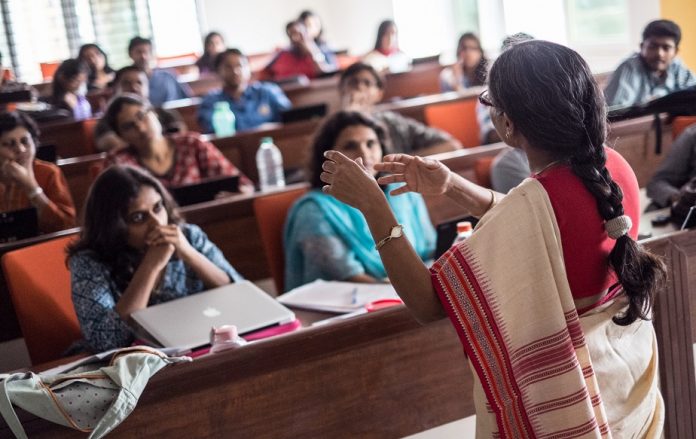A recent government report states that the student-teacher ratio in the Indian higher education is much lower than that of China and Brazil. While China and Brazil stand at a ratio of 19:1, India stands at a ratio of 24:1. This ratio is not just lower as compared with these two countries, but is also lower in comparison to Sweden which has a ratio of 12:1, Russia 10:1, Canada 9:1, and Britain 16:1.
A lower student-teacher ratio results in a poor quality of education. Studies state that due to a shortage in the number of teachers in the higher education sector, the teachers already appointed are overburdened which affects the quality of education imparted.
Moreover, very recently the enrolment of students in the institutes has increased. The All India Survey on Higher Education statistics states that the enrolment of students in 2017-18 was 36.6 million which has increased from 32.3 million in 2013-14. This increase in the number doesn’t match with the number of teachers in the higher education field.
The survey mentions that the number of teachers in fact have declined from 13,67,535 to 12,84,755. This has had a various adverse impact on the quality of education. As a result, the teaching method inclusive of questioning, reasoning and doubt solving has been affected. Additionally, due to overburdening, the teachers lack the time to carry out academic research and are even unable to encourage the students to carry out the research as well.
As there are only a few teachers teaching large groups of students, it has become impossible for them to provide personal attention to each and every student. Moreover, the time they get to dedicate to the students has also become inadequate.
Estimates state that currently, India is falling short of around 5 lakh teachers in the higher education sector which include all three- private, state and central universities.
As a solution to this, the universities and higher education institutions have started hiring part-time teachers, however, it is severely affecting the quality of education provided to the students, and often it is found that such teachers’ performance is extremely poor.
Currently, there are 6,600 posts vacant, just in central universities, and in the state and IIT, around 38% and 35% vacancies are required to be filled. There are various reasons why there exist so many vacancies. These reasons include the lack of funds, reluctance to bear the long term salary load and many others. Moreover, getting qualified and trained teachers to work in rural parts of the country is also challenging.
In the month of June, the UGC (Union Grants Commission) asked the government-run higher education universities and institutions to fill up the 3 lakh vacancies in the period of 6 months.
The government is further undertaking various initiatives to fulfil this gap.






























